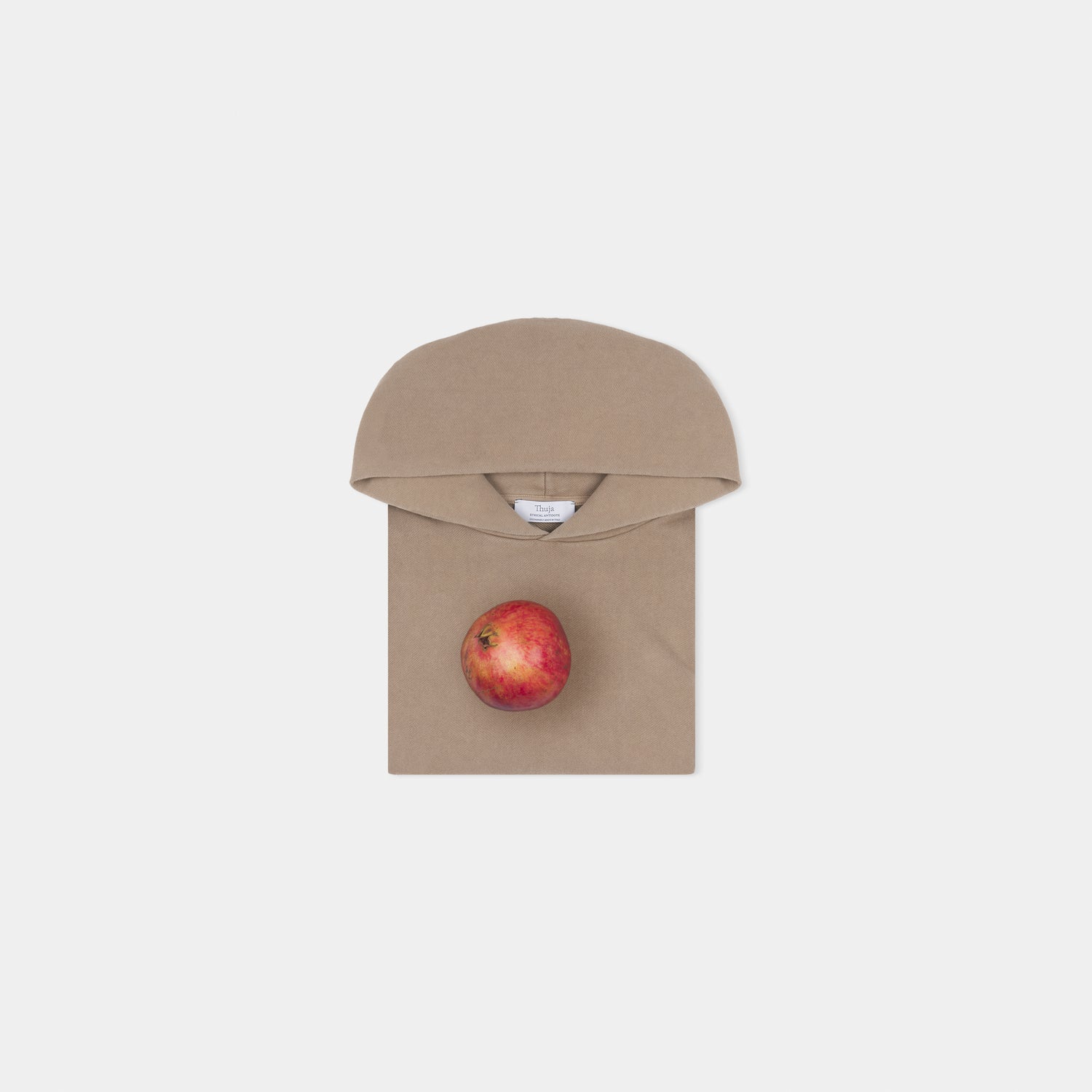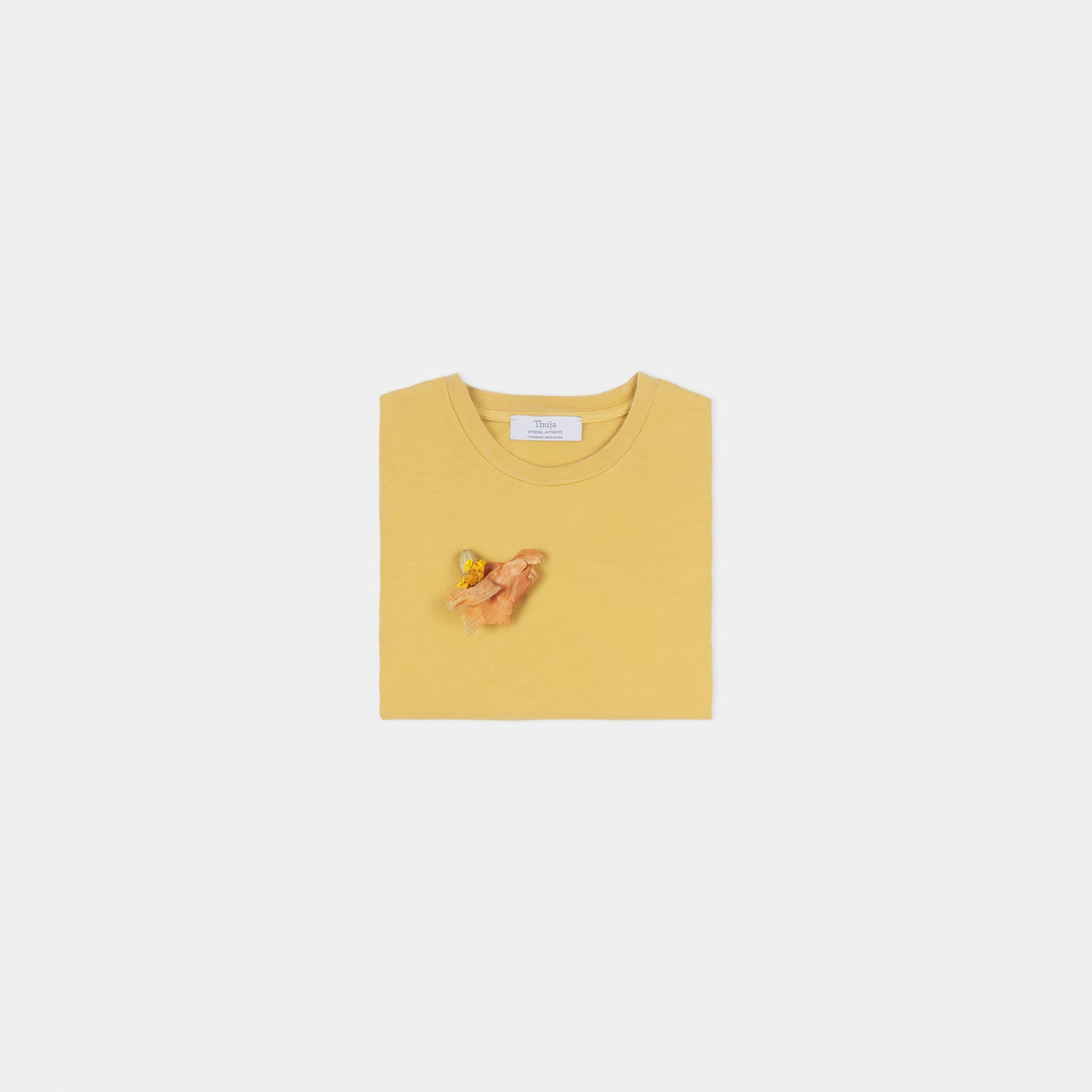
Thuja organic cotton
All our cotton is grown with organic methods that eliminate the use of synthetic pesticides, herbicides and GMO seeds
Why
Organic cotton is found in everything from clothing, footwear and home furnishings (towels, bathrobes, sheets, blankets, bedding), to baby products (clothing, toys, diapers), personal care items (health care products, makeup remover pads, cotton balls, and ear pads), and even stationery and note cards.
When we carefully examined the fibers for the creation of our fabrics in order to determine their impact on the environment, we imagined that cotton was "pure" and "natural", since it comes from a plant.
We were right only about the plant. The truth is that there is little pure or natural in cotton when grown in the traditional way.
Studies in the early 1990s involving cotton production chains in the United States revealed that 10% of all agricultural chemicals in the United States were used precisely for the production of cotton, the cultivation of which occupied only 1% of agricultural land.
Every year, on cotton fields cultivated in a way Traditionally, over 3,000 tons of chemicals were dumped in California alone. Research has shown that the extensive and intensive use of synthetic fertilizers, additives, defoliant substances and other compounds causes enormous damage to soil, water, air and countless living beings.
The alternative to this scenario is to eliminate the use of synthetic chemicals and use organically grown cotton instead.

What you need to know about organic cotton
Model for the future
By 2025, two-thirds of the world's population may face water shortages.
But organic cotton is 80% rain-fed, which reduces pressure on water sources. local water.
The absence of chemicals also means that the water is cleaner and safer.
Cotton is often grown in water-scarce areas using irrigation and it takes 2,700 liters of water to make a conventional cotton t-shirt.
You can make a difference
Taking care of the world and the people we share it with is a choice of life.
The choice of organic cotton is part of this choice. In 2015, 26 million tons of cotton were produced globally, most of it for the garment industry.
Organic cotton makes up less than 1% of this.
By choosing organic over conventional cotton, you have the purchasing power to influence brands, producers and even farmers.
Fair price for sustainability
When you buy organic cotton, you invest in water conservation, cleaner air, better soil and farmers' livelihoods.
The price of organic cotton is therefore sometimes , but not always, higher. However, as demand increases, more choices will become available.
Reduces the environmental impact
No toxic chemicals are used in organic cotton cultivation.It does not damage the soil, has less impact on the air and uses 88% less water and 62% less energy.
Conventional cotton uses about 16% of the world's insecticides and 7% of pesticides
Impact on our food system
Organic cotton is grown from organic cottonseed.
Cottonseed oil is used in a variety of food products such as cookies, chips and vegetable oil and is also given to the livestock.
So while cotton fiber isn't something we put into our bodies, the byproduct can make its way into our diet.
Promote secure jobs and better livelihoods
Growing organic cotton protects farmers and their families.
They are not exposed to toxic chemicals in the field or through their food and water supply.
It also means that farmers grow more than one crop that complements their food and income.

If it is certified according to an organic standard you can be sure that it is organic ...
Just because a garment is labeled green, sustainable or eco-friendly doesn't make it organic.
Cotton clothing is organic only if it is certified to a cotton standard Organic Content Standard (OCS) provides third-party assurance that the organic content in your clothing can be traced back to the source, while GOTS (Global Organic Textile Standard) tracks the organic content in your clothing and ensures that it is processed socially and in sustainable way.
Our results
Thuja has been using only 100% organic cotton since it was founded. Later, we also started using recycled cotton, in-conversion cotton, and Organic and Regenerative (ROC) certified pilot program cotton.
Farmers who grow their own cotton without using harmful chemicals reduce their dependence on large agrochemical companies, such as Bayer-Monsanto and Syngenta, and reduce the exposure of agricultural workers to potentially toxic and carcinogenic compounds.
Organically grown cotton uses solutions that respect nature and the environment to limit the use of pesticides and improve the quality of the soil instead of using the usual mixture of pesticides, herbicides, defoliant substances, synthetic fertilizers and GMO seeds that characterize the traditional cultivation of cotton.
These methods support biodiversity and maintain healthy ecosystems improve soil quality and often use less water.
Compared to co tone, a 45% reduction in CO2 emissions and an 87% reduction in water consumption were found with the widespread use of organic cotton.

The idea of Thuja comes from our love for the planet and its animals, for years we have been talking about natural disasters and how the fauna and flora are deteriorated year after year due to industries, we are aware of the problems related to "fast fashion" and the pollution it causes.
We want to be an "ethical antidote", an ethical antidote, because our goal is to give visibility and funds to associations that deal with safeguarding our planet, through the sale of clothing products in organic material certified or recycled
In addition to being certified, our products are embroidered with organic threads and shipped in sustainable packaging.
-

Sweatshirts
Here is our interpretation of the sweatshirt. We decided to define a...


